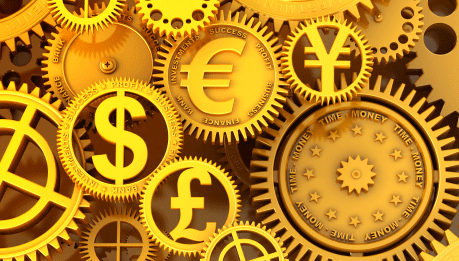Economic indicators are key data releases that provide insight into the health of a country’s economy. These indicators are closely watched by investors, traders, and analysts, as they can provide valuable information about future economic trends and potential opportunities in the foreign exchange (forex) market. An economic calendar is an essential tool that traders use to keep track of upcoming data releases and to plan their trades accordingly.
Here are the top 5 economic indicators that traders should pay attention to on a forex economic calendar:
1. Gross Domestic Product (GDP)
GDP is the most commonly used indicator of a country’s economic health. It measures the value of all goods and services produced within a country during a certain period of time. A high GDP indicates a strong economy, while a low GDP suggests weakness. GDP data is usually released every quarter and is considered a lagging indicator, reflecting the economy’s past performance rather than its current status.
2. Consumer Price Index (CPI)
The Consumer Price Index (CPI) measures the change in the price of a basket of goods and services consumed by households. It is a key indicator of inflation, which is the rate at which the general level of prices for goods and services is rising. A high inflation rate can lead to a decrease in the value of a currency, while a low inflation rate can cause an increase in the value of a currency.
3. Interest Rates
Interest rates are another important economic indicator to watch. Central banks use interest rates to control inflation and regulate the economy. A country with high-interest rates is considered to have a strong economy, as it can attract foreign investment. On the other hand, a country with low-interest rates may be struggling economically. Interest rate changes are usually announced by central banks regularly and have a direct impact on currency values.
4. Employment Data
Employment data, such as the unemployment rate, is another key indicator of a country’s economic health. A low unemployment rate suggests a strong economy, while a high unemployment rate indicates weakness. Employment data is usually released monthly and can have a significant impact on the value of a currency.
5. Trade Balance
The trade balance is the net result of a nation’s imports and exports. A positive trade balance, also known as a trade surplus, indicates that a country exports more than it imports, which is considered a sign of a strong economy. A negative trade balance, also known as a trade deficit, suggests that a country is importing more than it is exporting, which is considered a sign of a weak economy. Trade balance data is usually released on a monthly or quarterly basis and can have a significant impact on the value of a currency.
How to Use Economic Indicators in Forex Trading
One strategy for using economic indicators in forex trading is to focus on the data releases that have the greatest impact on the market. For example, GDP data is considered one of the most important indicators of a country’s economic health so traders may pay closer attention to GDP data releases.
Another strategy is to look for discrepancies between the data releases and the market’s reaction. If a data release is much better or worse than expected, it can cause a sharp movement in the market. Traders can take advantage of these movements by making quick trades in the direction of the market’s reaction.
In conclusion,
economic indicators are crucial for forex traders to understand and monitor as they provide insight into a country’s economic situation and can greatly impact currency values. The top five indicators to watch include GDP, CPI, Interest Rates, Employment Data, and Trade Balance. By keeping track of these indicators and using them in combination with other forms of analysis, traders can make more informed decisions in the forex market.












